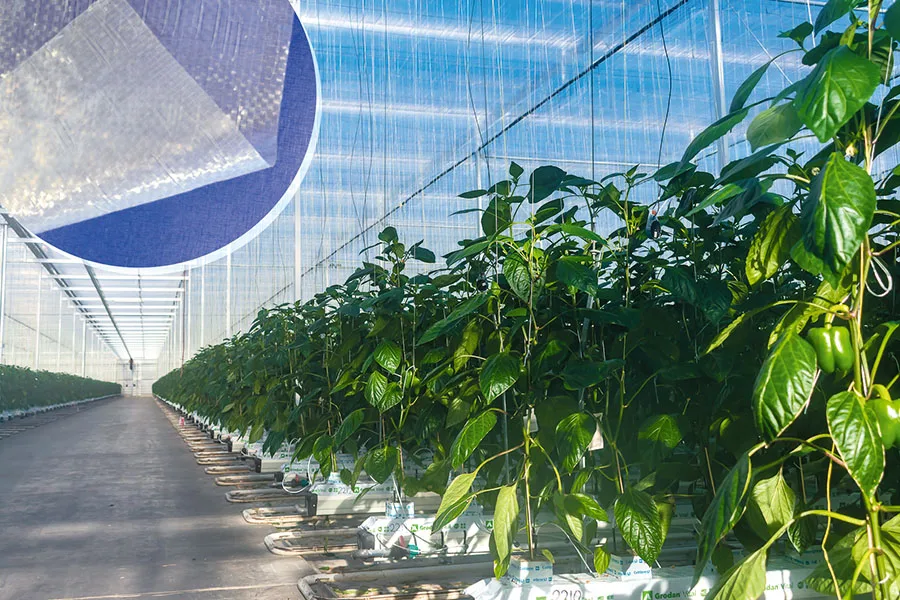- English

The recent energy crisis and the climate objectives have drawn attention to climate screens. As a result, the (energy-saving) properties of climate screens are being investigated in increasing detail.
The screens we know today were first used in the 1970’s because of the oil crisis. Although they may have saved energy at the time, they also caused a dead greenhouse climate.
To solve this, manufacturers made the screens porous by incorporating yarns (threads) into the textile: the screens were not completely tight but permeable to some extent.
Today, these typical yarns are still present in most screens and have a double function: on the one hand they drain moisture by absorbing condensation at the bottom of the screen, then transporting it via capillarity to the top of the screen, where the moisture evaporates again. On the other hand, the yarns also create many tiny holes in a screen allowing warm, moist air to find its way through the screen. This porosity makes it possible to control the climate.
The downside is their energy loss. The latent and sensible heat loss through the screen along with moisture and warm air, contribute to the greenhouse’s energy consumption.
Dehumidification & hermetic screens
Thanks to the strong technological evolution in the horticultural sector, dehumidification systems saw the light of day.
A dehumidification system allows the porous screen to be closed longer, saving energy. But it can be done even better by replacing the porous screen with a tighter screen. The more the screen is closed, the more energy it will save as less sensible and latent heat can escape through the screen. Recent research by the WUR within the Energlik project shows that a hermetic screen combined with a dehumidification system proves to be a good energy-saving duo.
Therefore, Phormium developed Hermetic Clear. This screen doesn’t contain moisture-transporting yarns and is much less permeable to moisture and warm air than a typical porous screen.
Whereas in the absence of a dehumidification system this would be seen as a disadvantage, in combination with a dehumidification system a hermetic screen is a strong advantage. The energy that has been preserved via the screen stays in the greenhouse, reducing energy consumption.
Research performed by the founders of Plant Empowerment shows that hermetic screens also ensure a stable greenhouse climate by preventing unwanted air flows through the screen.
For further questions, contact the Phormium expert team.